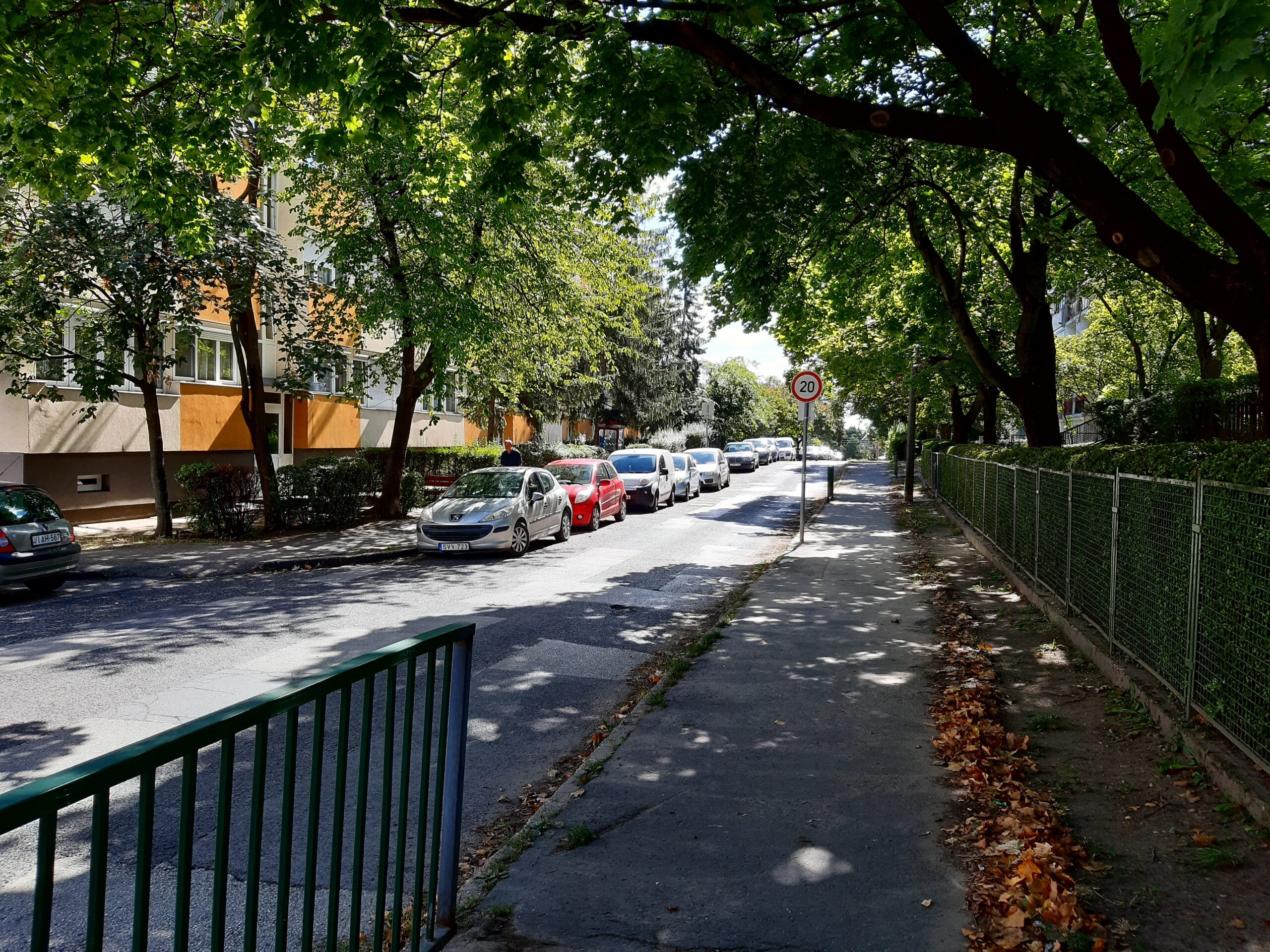Szentendre is one of the Hungarian follower cities of the NXTLVL Parking INTERREG Central Europe project. The city is located at the Danube, near Budapest; its historic city centre attracts many tourists. High motorization (officially 480 vehicles/1,000 inhabitants) and particularly heavy traffic are also typical. The city centre is a paid parking zone, which has been successful in terms of traffic regulation but not popular in the town. Parking problems have sprawled in the last decade and are appearing in more and more places in other parts of the city.
Housing estates in Hungary are typically affected by parking problems. Housing estates were built between the 1960s and the 1980s, parking lots were usually built for about half of the long-term forecasted parking needs at that time, and the rest were intended to be built continuously as the needs grew, but this did not happen due to a lack of funds, so the parking capacities run out in the housing estates in Hungary by the early 2000s.
One such housing estate in Szentendre is the Püspökmajor housing estate. This one is consisting of 4-storey houses, and home to several city services. By now there are serious parking problems and, as a result, significant traffic problems as well. There are 402 parking spaces in the investigated area, but recently run out of the free parking spaces. The best description given by the locals: “We do not dare to leave the parking spaces, because by the time we come back there is no longer free parking space”. In addition, city services (e.g. garbage collection), pedestrian needs and green spaces compete for the spaces occupied by parking cars. The available services (nursery, kindergarten, school, swimming pool) attract serious city traffic to the otherwise narrow and overparked streets, especially during school days.
The locals have realized that the root of the traffic problems they perceive is the overparking. According to the measurements, the vehicles of the residents are decisive in the area, but a significant part of them (24%, occupied almost half of the capacity) do not, or only barely move. Vehicles leaving for work in the morning accounted for barely 2% (!) of the total parking demand. Because of the educational institutions, there is a significant amount of car transport for children in the morning and afternoon, which in fact has no viable alternative in the town. Another important parking requirement is the vehicles of the employees here, which occupy the best places during the most important period of the day. In addition to parking, residents here are particularly bothered by the presence of daily traffic jams on parked streets and intersections, the unsafe pedestrian crossings.
The residents would support the introduction of various solutions for parking management. The housing estate is currently not fee-paying, and based on today’s Hungarian legislation, it cannot be, since for this at least 20% of parking needs should be shorter than 2 hours, which only exists on a few short sections of the street.
Finally, based on the opinions of the residents, the creation of time-limited and exclusive residential parking in some of the most problematic street sections appeared on the concept plan (the former with a hatched pattern, the latter with a checkered pattern on the conception). A widely supported solution was the construction of a smaller parking lot in the edge of the territory and some minor traffic engineering interventions. Introducing the one-way regulation of the two most problematic street sections was also generally supported, but many counterarguments appeared here.
